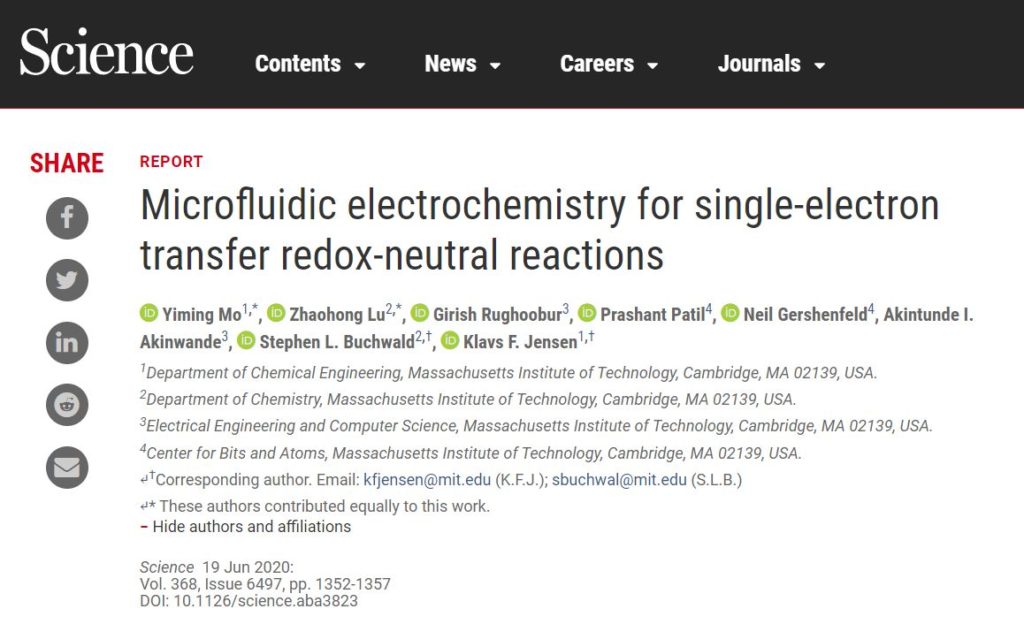Science:微流体电化学合成 (Microfluidic redox-neutral electrochemistry)

在过去的几十多年里,可见光光催化剂在单电子转移(SET)的氧化还原中性反应(single-electron transfer redox-neutral reactions)上的巨大成功,同时也为合成化学家提供了强大的工具来制备那些传统方法难以合成的化合物。然而,这些光催化剂大多是贵金属络合物或复杂的有机染料,因此存在成本较高、氧化还原电势调节比较有限、与强亲核试剂、亲电试剂或自由基中间体不兼容以及在产物纯化过程中除去过渡金属比较困难等限制性。相比之下,电化学合成是一个新兴的氧化还原平台,优势在于环境友好、经济实惠、便于放大以及适用于多种转化。
利用微流控的氧化还原中性电化学(μRN-eChem)平台成功在两个电极产生活性中间体并发生想要的单电子自由基-自由基交叉偶联反应(SET radical-radical cross-coupling reactions)、Minisci反应和镍催化的C(sp2)-O交叉偶联反应,克服了之前光化学激发的单电子转移氧化还原反应的不足。其中的关键在于——正负电极之间极小的距离 25 μm。
Over the past decade, pioneering developments of visible-light photocatalysis in organic synthesis have enabled previously inaccessible redox-neutral reactions that proceed through single-electron transfer (SET) processes. Nonetheless, the use of photocatalysts, mostly precious metal complexes or sophisticated organic dyes (4), could have practical limitations, such as the non-trivial tuning of redox potentials, high cost of transition-metal photocatalysts at scale, incompatibility of photocatalysts with strong nucleophiles, electrophiles, or radical intermediates, and challenging removal of transition metals during purification of the products. Electrosynthesis, on the other hand, is an emerging redox platform accessing environmentally benign, cost-effective, scalable, and unique transformations powered by inexpensive electricity.
This work aims at unleashing the capability of microfluidic electrochemistry, and successfully developed a microfluidic redox-neutral electrochemical platform (µRN-eChem) to overcome the challenges of photochemistry-inspired SET redox-neutral reactions that involve reactive intermediates generated from both electrodes. Reactive intermediates, including radicals, generated from two different electrodes can rapidly diffuse through an extremely thin gap (25 µm) between cathode and anode forging new bond formations. A variety of cross-coupling reactions have been demonstrated, including radical-radical cross-coupling, Minisci-type reactions, and nickel-catalyzed C(sp2)–O cross-coupling.

